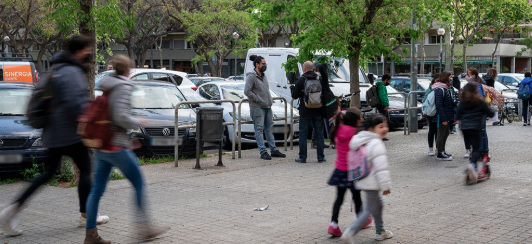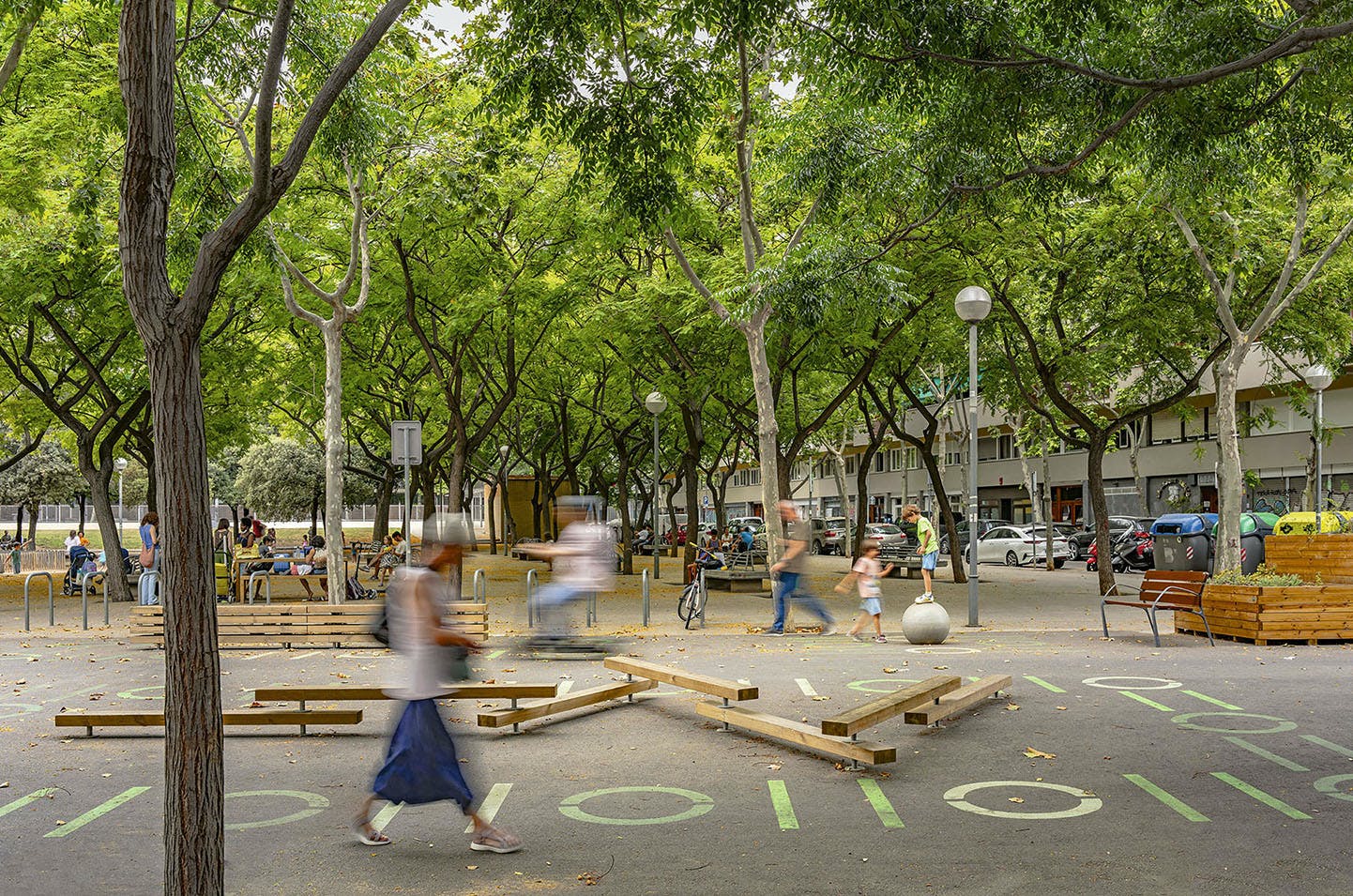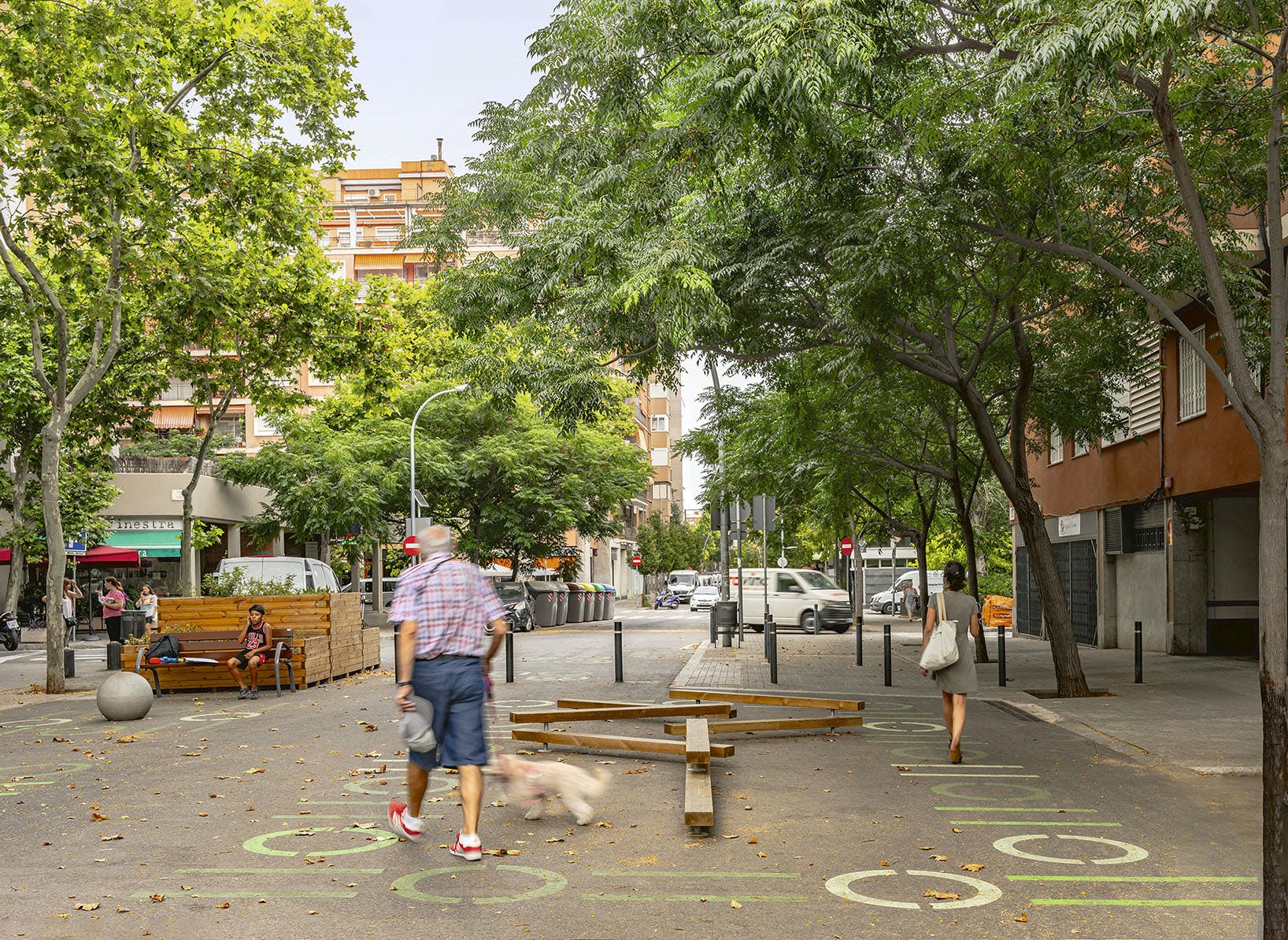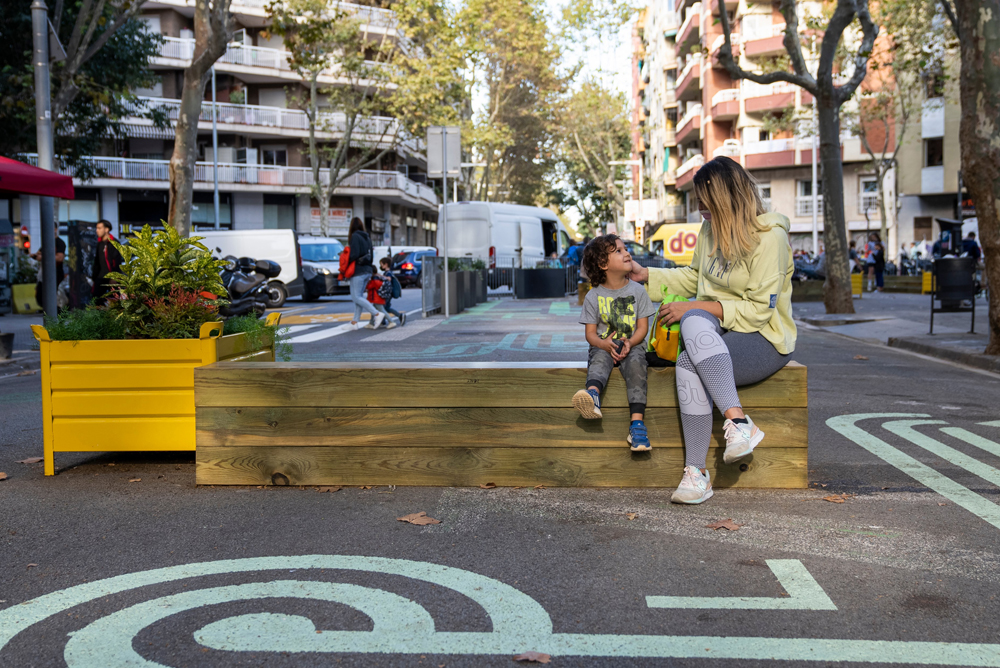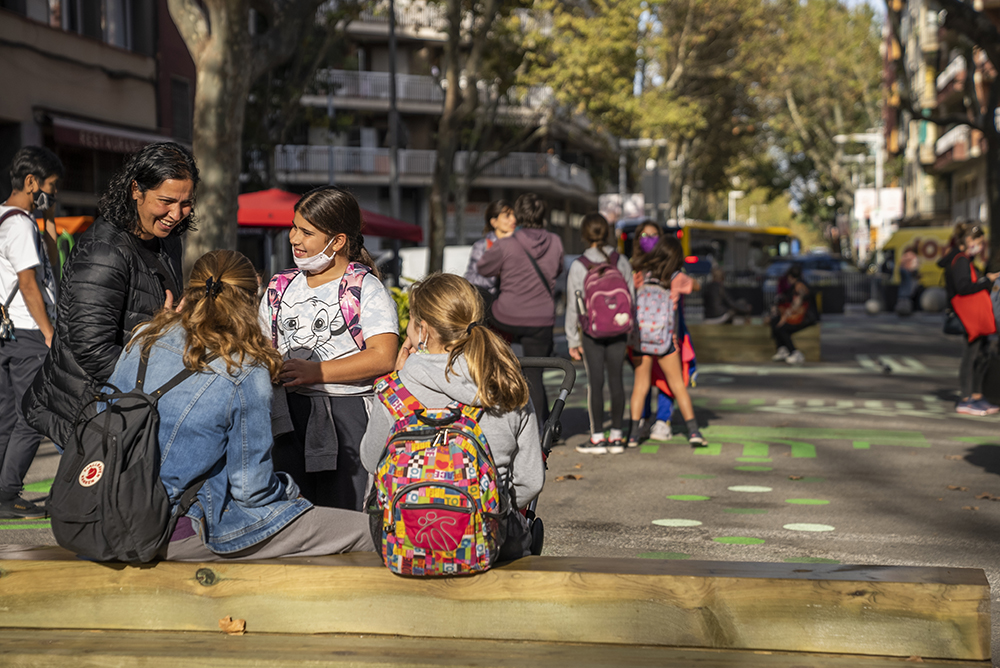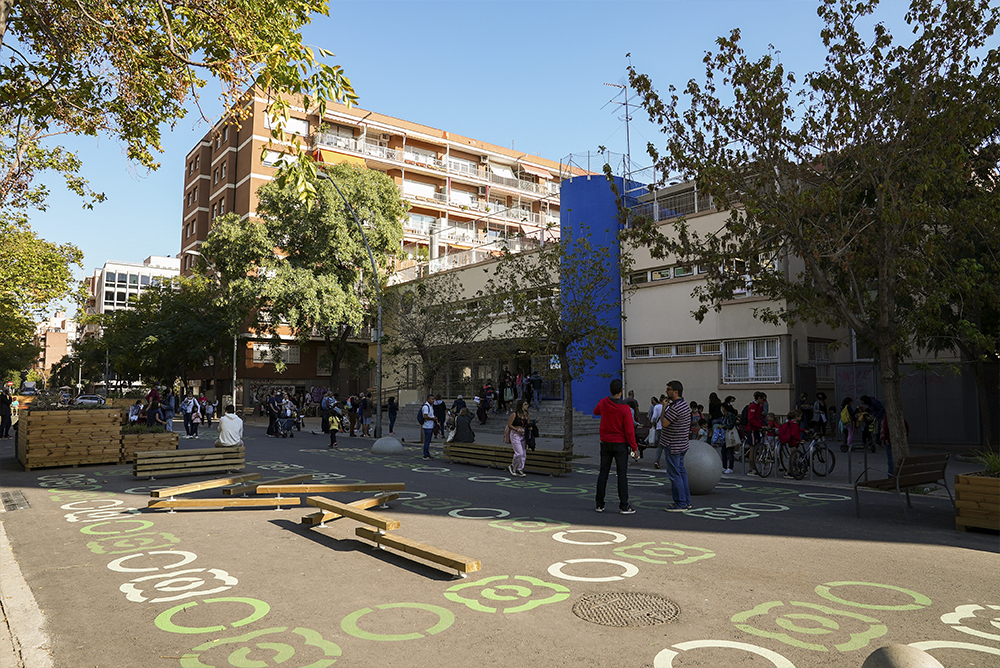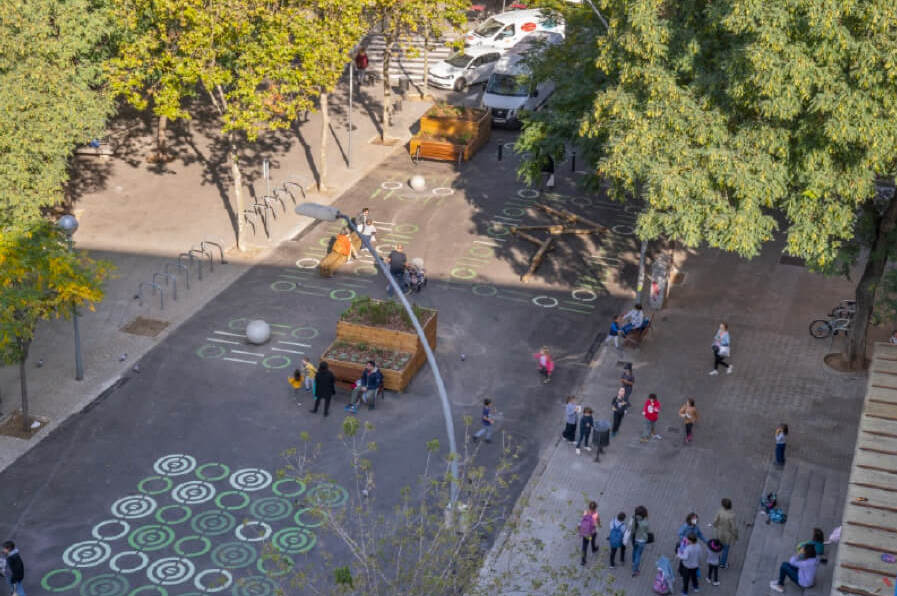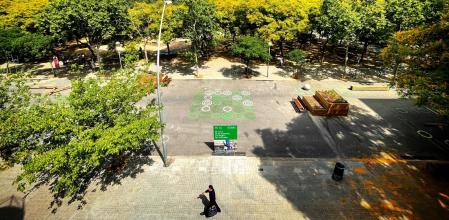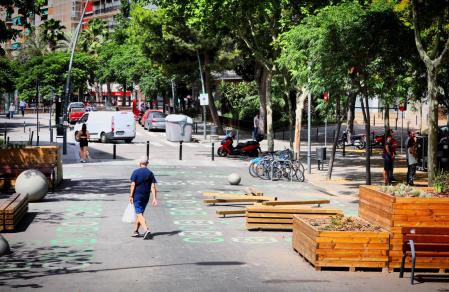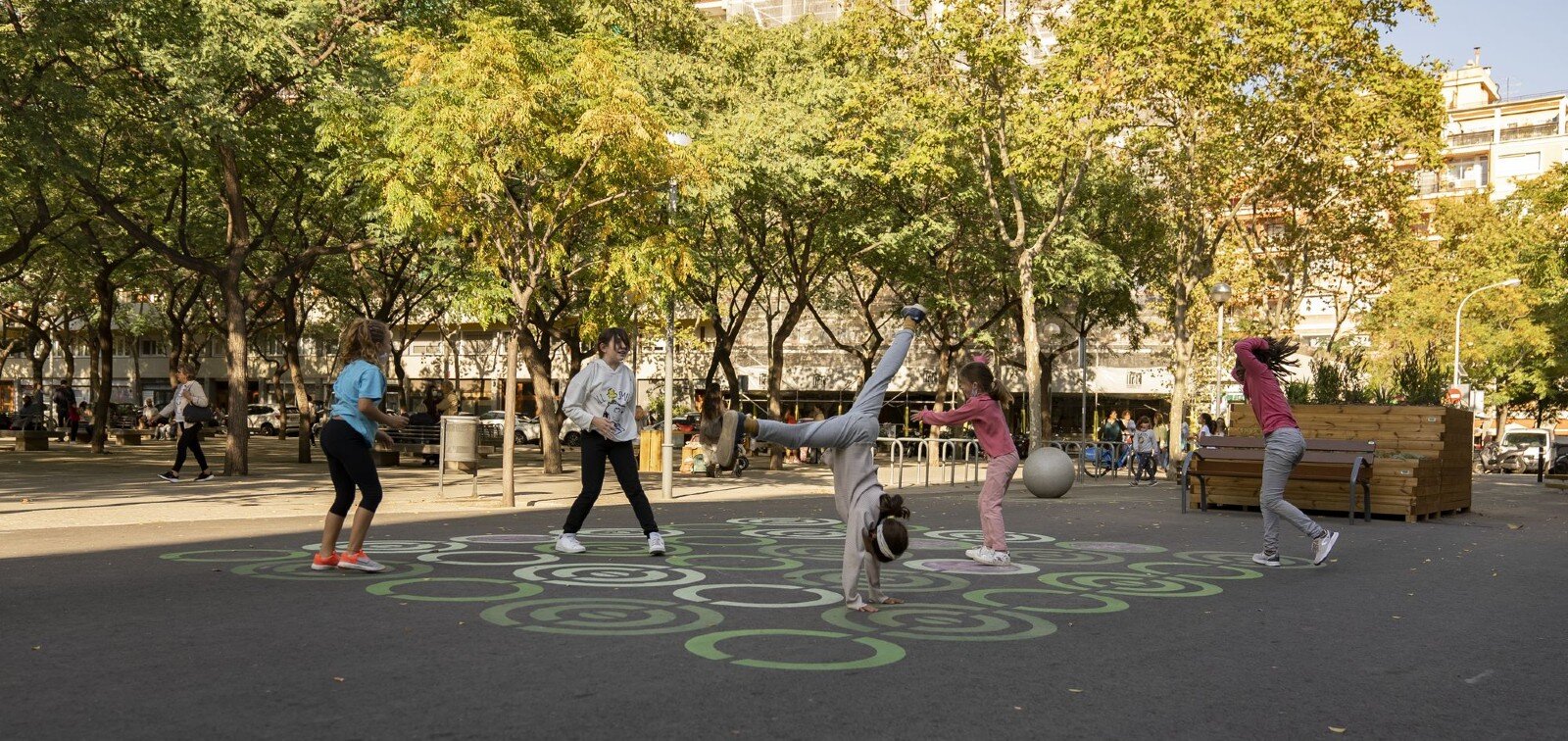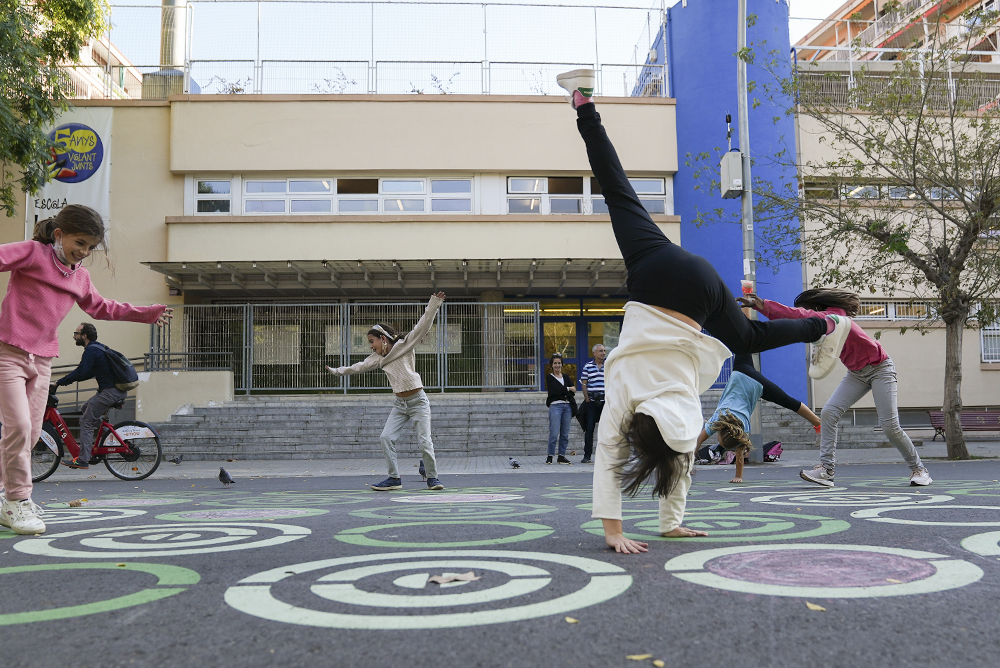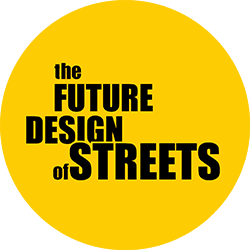Carrer de Fígols – Barcelona, Spain
Programme: Protegim Les Escoles
School(s): School Lavínia
Architect and Management: Municipality of Barcelona, in collaboration with ICTA-UAB and ISGlobal
Date: 2020
Show on google maps
Keywords: Child-centered urban design; School–park integration; Urban resilience through play; Healthy urban environments; Participatory urban planning
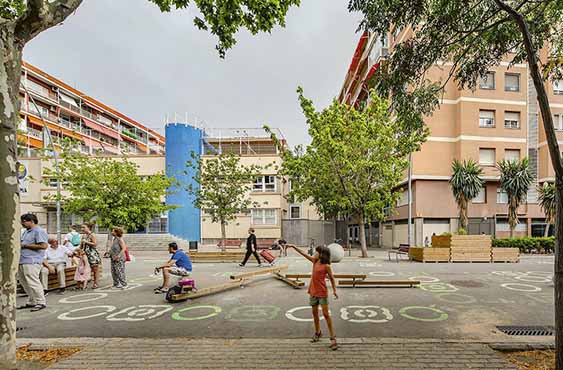
The Carrer de Fígols intervention, as part of Barcelona’s Protegim les Escoles programme, is a clear example of a school-street transformation, where the street has been repurposed primarily for children and community use. Prior to the intervention, Carrer de Fígols featured two very different pavements: the left-hand pavement served as a circulation space for families entering the school, while the right-hand pavement, bordering Plaça del Sòl de Baix, was wider, shaded by trees, and used by pedestrians, cyclists, and children on scooters or bicycles. The carriageway allowed vehicle traffic, including double parking during school drop-off times, while pedestrian crossings were only at the street’s ends, extending routes between the school and the park.
The intervention involved the complete closure of the street to motorized vehicles, diverting traffic to a parallel route. The redesign incorporated playful and multifunctional street elements—including pavement graphics, trampolines, skater features, seating, and shaded areas—to encourage physical activity, social interaction, and exploration. Green infrastructure, such as trees, soft landscaping, and permeable surfaces, improves air quality and microclimate while defining zones for play, gathering, and rest, enhancing the street’s spatial diversity and usability.
A child-centred and participatory approach guided the project: students, parents, residents, and local stakeholders contributed to decisions about circulation, play features, and spatial organisation. The intervention also connects the school with the adjacent Plaça del Sòl de Baix, effectively extending the school-yard into a park-like public space, promoting independent mobility, play, and engagement with the broader urban environment. This transformation converted a former traffic-dominated street into a vibrant, inclusive, and multifunctional school-street, demonstrating how street redesign can enhance child safety, mobility, play opportunities, and community interaction.
The protection of schools and their surroundings is a key priority for the Barcelona City Council. Beyond the Protegim les Escoles programme, several complementary initiatives support safer, healthier, and more sustainable school environments, including Camins Escolars, Espais Amics, Climatic Refuges, Escola Respira, Escoles + Sostenibles, and Pla del Joc a l’Espai Públic. Together, these initiatives illustrate a comprehensive approach to child-centered urban planning, integrating streets, schools, parks, and public spaces to create a healthier, safer, and more socially engaged city.
